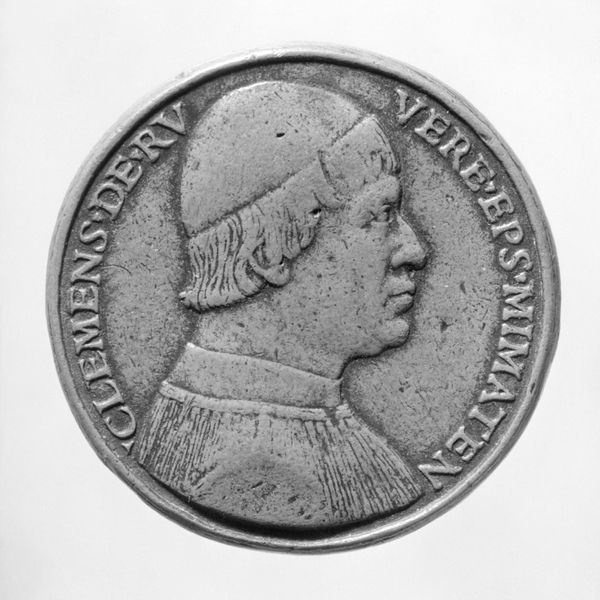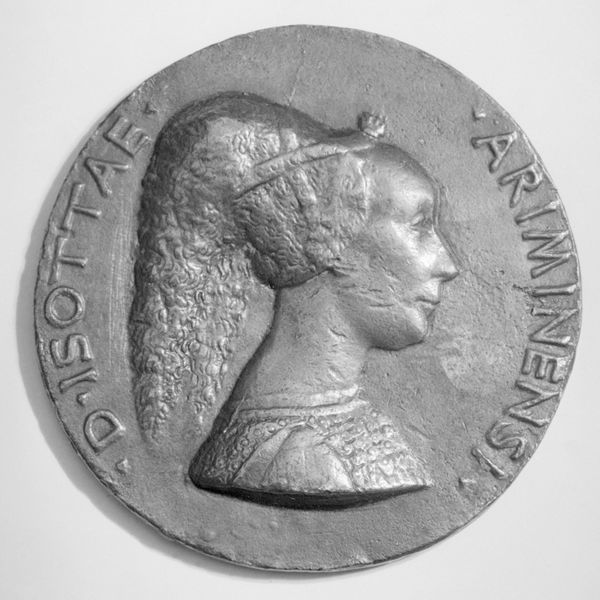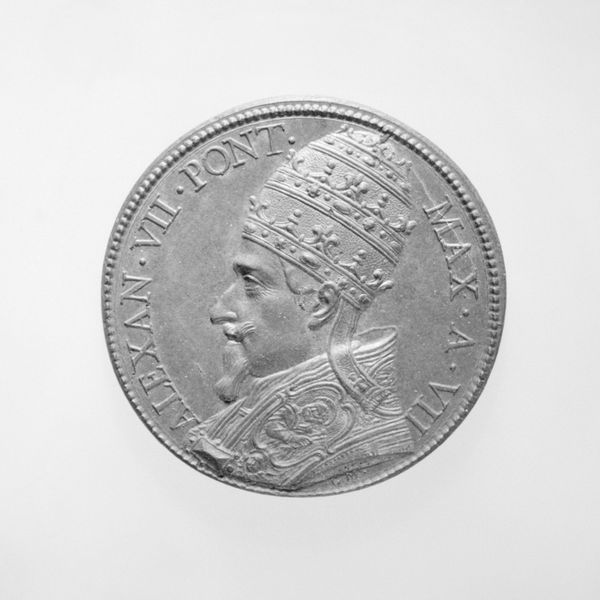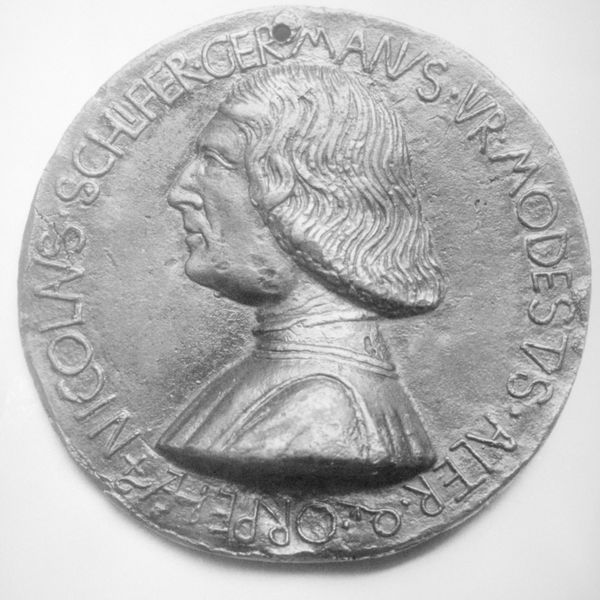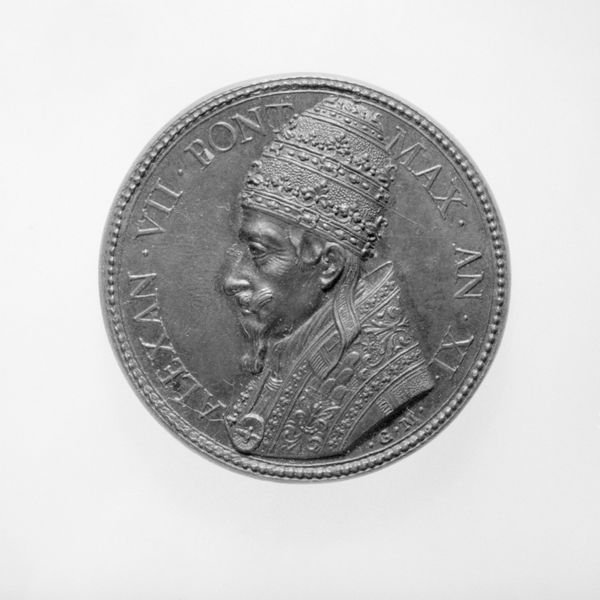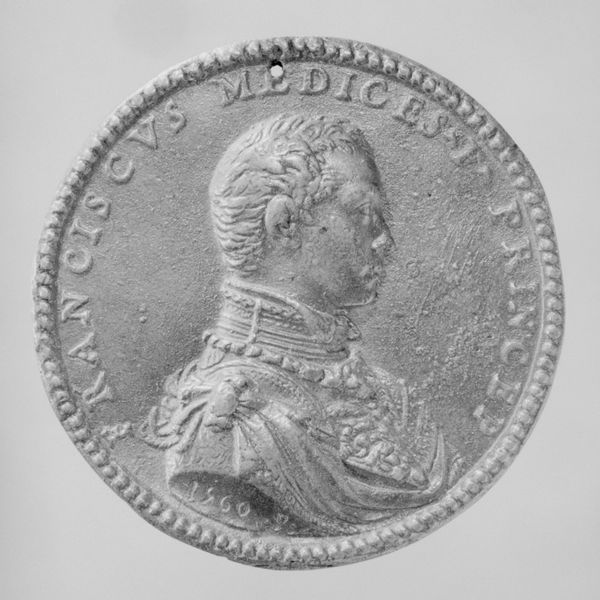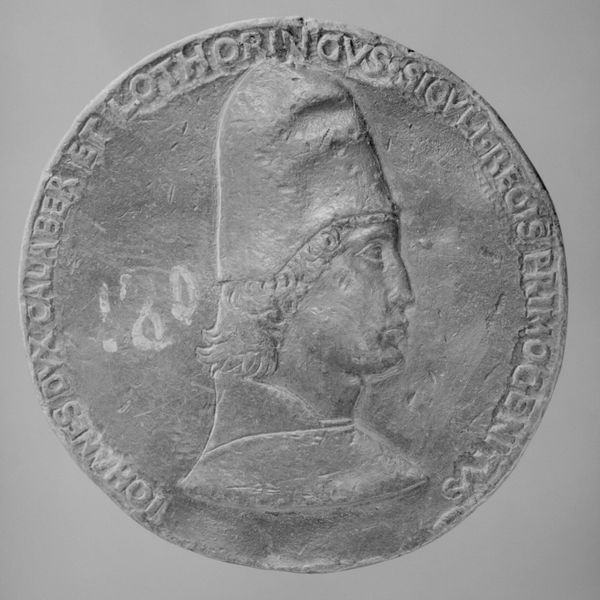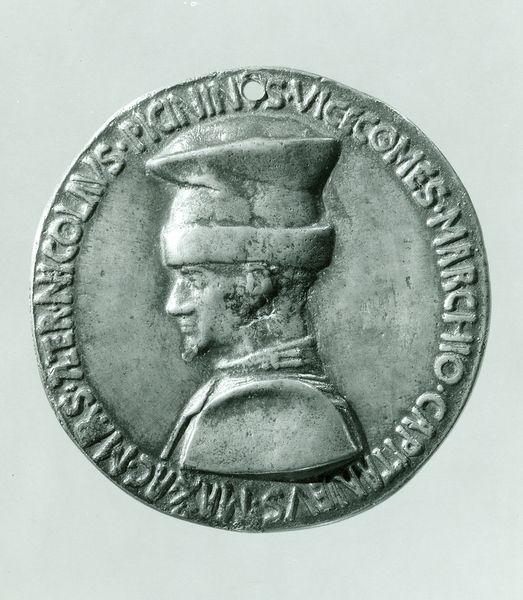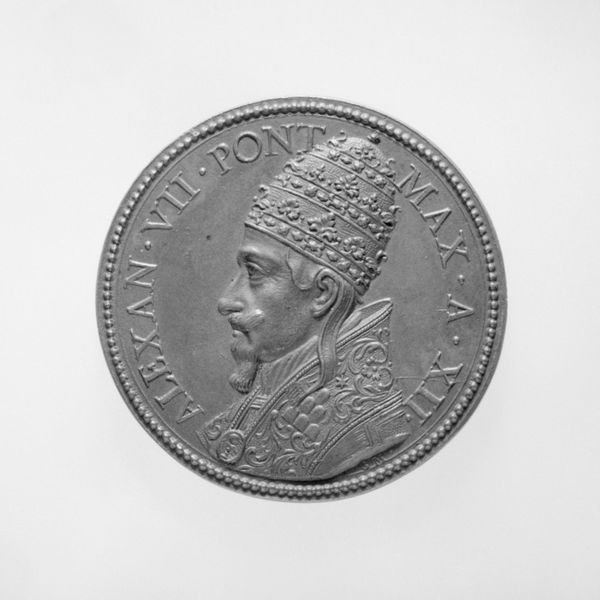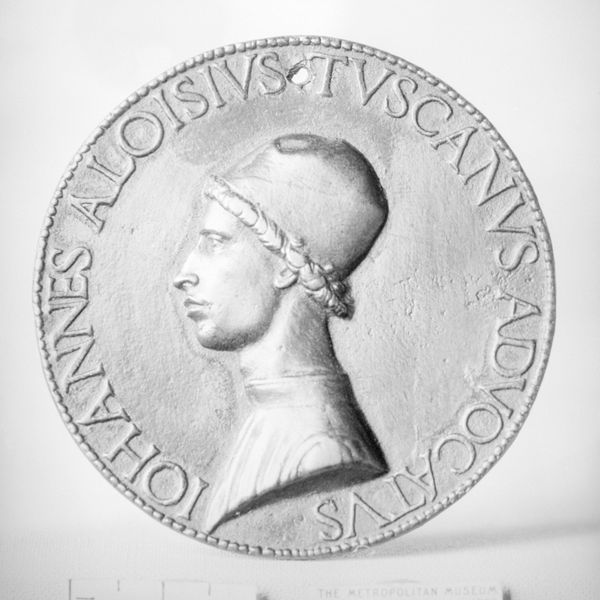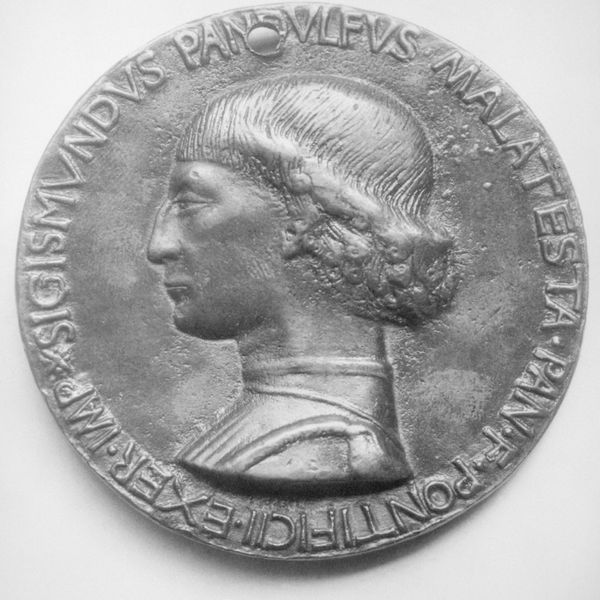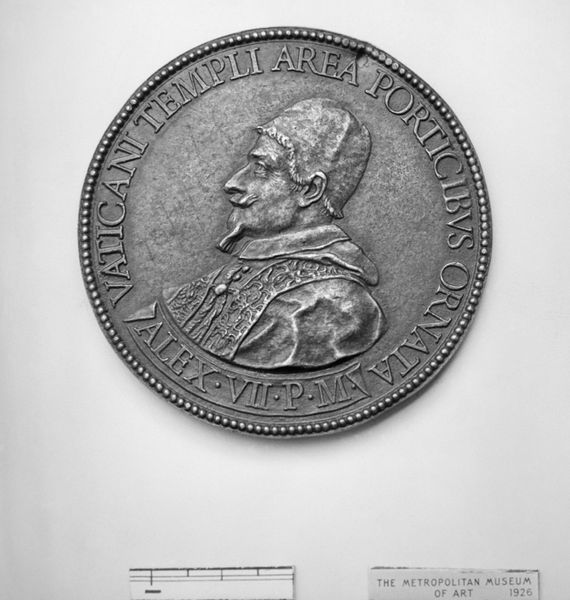
Thomas Bohier, général des finances 1496, d. 1524 (o.s.) 1503
0:00
0:00
relief, sculpture
#
portrait
#
medal
#
medieval
#
portrait image
#
close up portrait
#
relief
#
sculptural image
#
male portrait
#
portrait reference
#
portrait head and shoulder
#
framed image
#
sculpture
#
mid-section and head portrait
#
men
#
facial portrait
#
decorative-art
#
profile
#
statue
#
arm
Dimensions: Diameter: 62 mm
Copyright: Public Domain
Curator: Here we see “Thomas Bohier, general des finances 1496, d. 1524 (o.s.)," an exquisite relief sculpture dating back to 1503. Editor: It feels cold. Imposing, despite its probable scale. There's something about the stark profile and the lettering that gives off an air of immutable authority. Curator: Observe the incised inscription circumscribing the figure—framing Thomas Bohier’s identity quite literally. The work embodies characteristics of the decorative arts. Editor: And it’s all about labour isn't it? Look at how precisely that relief has been formed. We’re talking about careful tooling and chasing, skills honed over years. Who were the artisans, and what was their relationship with Bohier? Their hands shaped this "immutability". Curator: We are meant to decode this object, I argue, as more than a historical or artisanal artifact; instead, we engage it as a symbol. The severe profile, rendered with meticulous attention to detail, evokes classical portraiture, a deliberate invocation of power and status. Consider also the semiotic weight of his clothing— Editor: A question for you though. The piece seems relatively unadorned for a man of such standing. Was this intentional— a nod towards austerity perhaps? Or indicative of the era's stylistic preferences? It tells us much about his world but what about his material life, the economy that defined who got to commission such objects, what sort of metal it’s worked from, where was it mined? Curator: Intriguing observations, as ever! Certainly, the relative lack of overt ornamentation directs our attention to the lines and form itself. Ultimately, the reduction contributes to the aura of classical dignity the sculptor wished to achieve. Editor: But let's also note that it IS silver—that detail changes the whole conversation! What can a close look at how those raw materials were gathered, transformed and then eventually idealized tell us about how money actually functioned? This isn’t simply about how somebody wanted to be seen, but about HOW wealth gets created through things. Curator: A fruitful exchange, indeed! Thank you for prompting an expansion of our critical vista to take in labor and value systems and material provenance when considering this portrait! Editor: Thanks, I guess. It always makes one pause for reflection—this interplay between the abstract ideals and the grit that births them.
Comments
No comments
Be the first to comment and join the conversation on the ultimate creative platform.
